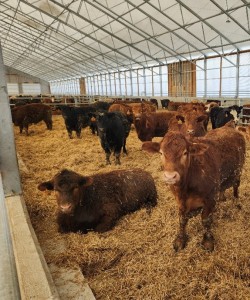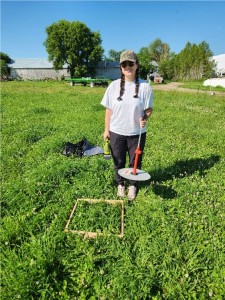The term “Marginal Gains” or “The 1% Factor” was coined by Sir David Brailsford, who as Performance Director of British Cycling enabled the British Olympic cycling team to win two gold medals at the 2004 Athens Olympic Games. This was the team’s best finish since 1908. Marginal gains theory was largely credited with the team’s success and with achievements at other events. Consequently, marginal gains theory has been adopted across the sports world and by the business community.
Marginal gains theory is simple to understand, and incredibly powerful. It is based on three fundamental principles:
- The change must be small, but the outcome must be large.
- The change should be “easy” or “simple” to apply.
- The change should be relatively “inexpensive” to deliver.
The term “1% factor” was coined to emphasise the principle of making small changes for big outcomes.
The change must be small, but the outcome must be large.
This is the single most important element of marginal gains theory and can be applied to almost any part of the beef production system.
Improving feedlot average daily gain is the simplest example of the theory in action. If we take the example of a feedlot producer who buys calves at 650 lbs and takes them to 1,520 lbs over a 330-day feeding period, split into 150 days at 2.2 lbs per day and 180 days at 3 lbs per day. If this producer improves the average daily gain by 1%, they will weigh 1,528.7 lbs at the end of the feeding period, an increase of 8.7 lbs for the same feeding period. The change is small (0.03 lbs per day) but the outcome is large. For a feedlot finishing 1000 cattle per year, a 1% change in average daily gain would deliver 8,700 lbs of extra weight or $21,000 of extra annual gross revenue (using April 2024 Ontario market prices).

Where a 100 head beef cow farm with the provincial average weaning rate of 91% increases average weaning weight by 1% (from 600 lbs to 606 lbs), total weaning weight gain for the herd would increase by 546 lbs (91 animals multiplied by 6 lbs), giving a gross revenue gain of $1,970. If the increase in weight can be combined with a 1% increase in calves weaned (increase by 1 calf), the combined increase in gross revenue could be as high as $4,310 (using Oct. 2023 Ontario market prices).
The gains described are achieved without any changes to the number of animals in the herd. This demonstrates the powerful effect making small changes that have a big outcome can have on performance and a producer’s bottom line. The principal of marginal gain theory can be applied to a wide range of activities on farm which, when combined, can have a dramatic effect on on-farm economic performance.
The key to marginal gain theory is identifying those small changes that have a big impact. If the change brings about only a “small” output the cost or effort of making the change will often outweigh the benefit.
The change must be “easy” or “simple” to apply.
This is an important component of marginal gains theory as it directs what areas within the production system producers should change. The basis of this principal is that the change must not be onerous or require too much additional work to achieve the outcome.
In the example of the feedlot producer above, improving average daily gains by 1% should require only a simple change in the ration. Assuming that this is not some novel feed ingredient, unusual feeding practice or excessive use of existing on-farm feed ingredients, there will be no change to the daily farm practice and so the gains can be achieved with ease.
To achieve greater weaning weights, it may simply be the case of using better quality genetics or better winter feeding of pregnant cows. In this case, the change is relatively simple and therefore should be easily adoptable.
Understanding the “it should be easy” component of marginal gains theory is very important for extension specialists as it directly impacts knowledge adoption by producers. If a production practice, system, etc. is shown to be positive but is onerous to implement by producers, then the practice will not be adopted by producers (in large numbers) until such time that the onerous element of the practice is removed.
As an example. Measuring the dry matter content of paddocks to estimate the amount of pasture available for grazing is an excellent pasture management tool and helps drive both pasture and animal performance. However, the process requires cutting and drying grass samples or using plate meters to estimate pasture dry matter from pasture height. While accurate, these practices are time consuming and onerous for producers, and consequently, adoption of these practices is limited to only to the most enthusiastic.

However, things in this sphere are changing. Remote sensing tools such as LIDAR or more significantly, the use of satellites to measure pasture DM will significantly change the capacity of producers to carry out this task which will allow easy estimation of available pasture dry matter content over the whole farm. At that point, a larger number of producers will be able to adopt the practice.
The change should be relatively “inexpensive” to deliver.
The cost of delivering change is an important principle of marginal gains theory. While the cost of change should be “inexpensive”, this is relative to the value of the output. If we take the example of a 50 head cow-calf producer who extends the grazing season by 6 weeks through grazing of a cover crop, the value of the gain through a reduction in hay cost alone is approximately $7,350 (assuming hay at $0.10/lb DM; 1400 lb cow with a DM intake of 2.5% BW). The cost of the change (growing a cover crop) averages around $150 per acre in Ontario. Assuming it requires 42 acres of cover crops to feed 50 cows for 42 days at a cost of $150 per acre, total cost would be $6,300 giving a net profit of $1,050. In this example, the cost of the change was less than the value of the output. In beef production systems, it’s critically important to be able to identify all the costs and all the benefits. This can sometimes be a challenge.
As another example – a cow calf producer wishes to improve calf weaning weight by 1% through genetic improvement using a stock bull. From the example above we calculated that a 1% improvement in weaning weight yielded an increase in value of $1,970. The decision then is whether it is best to change the current stock bull for one with greater genetic potential or will the cost of a new bull be greater or less than the improvement in weaning? If the current beef bull is close to replacement, then the answer is probably yes as the replacement will take place in any event. If the current bull is a younger animal, then the answer is probably no, as there is the capital lost from the current animal and the added cost of a purchasing a new animal. In this case, the producer should look at other options to achieve a 1% improvement in weaning weight.
Understanding the Process of Outcome
Applying marginal gains theory to a beef production system forces an understanding of the process of outcomes. As an example, by examining the current process a feedlot producer currently uses to get newly received cattle onto feed quickly he or she may be able to identify simple changes (e.g., purchase only properly preconditioned cattle, bunk trained cattle etc.), that bring about an improvement in performance without a significant change to current work practice or the need for capital investments. An examination of process helps identify changes that are small but with significant outcomes, changes that are easy to apply and changes that are relatively inexpensive.
Summary
Marginal gains theory is a powerful tool to assess where to make changes in a production system that will deliver the greatest level of output. The basic principle of the theory is that any change must be small, but the outcome must be large, that change must be easy to implement, and that change must be inexpensive. The key element to the success of marginal gains theory is identifying the parts of the production system where all elements of the theory can be successfully applied.
The theory can also be used by extension specialists and others to identify knowledge transfer opportunities that will be easily adopted but also inform about those technologies, no matter how beneficial, that will not yet be adopted by producers until some moderation in the process of adoption can be developed.
References:
Byrne, J. Grazing Cover Crops – A Cost Benefit Analysis. 2021. Ontario Beef Magazine.
Beef Farmers of Ontario, Weekly Market Information Report, 2024, https://www.ontariobeef.com/markets/weekly_reports/2024/20240405.pdf
Clear, J., Atomic Habits, 2018.
Lupton, M., The Ultimate Guide to Marginal Gains. 2021, Champions: The Speakers Agency.
Ontario Agricultural Commodity Prices Summary, OMAFRA, 2024. Unpublished.
